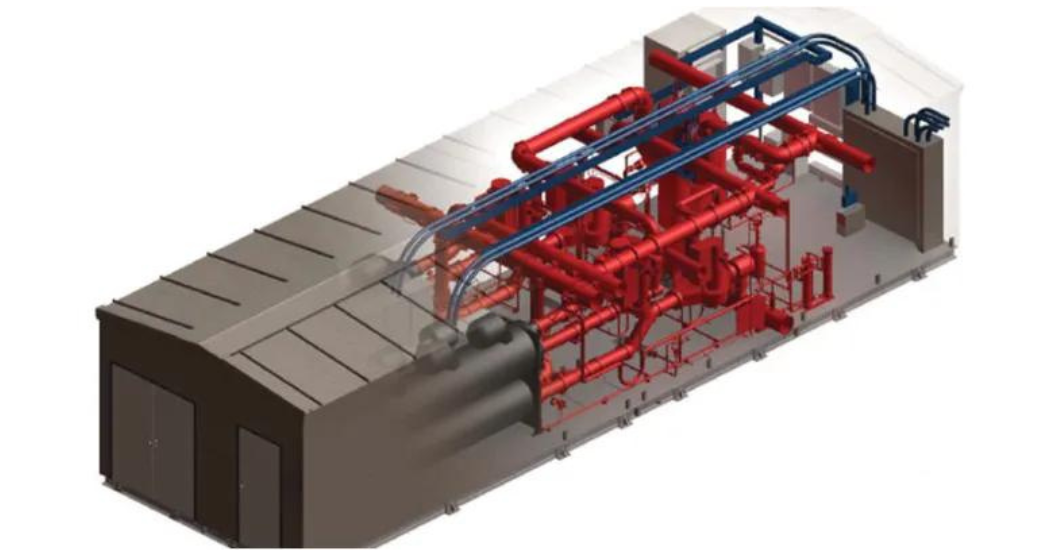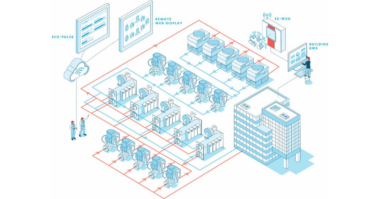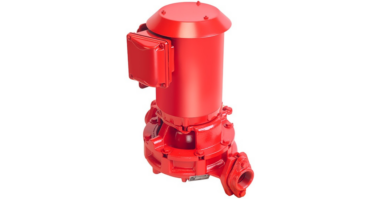District energy offers the advantage of mitigating fluctuations in energy demand by consolidating individual cycles, thereby reducing the impact of low-end user numbers. This ‘smoothing’ effect provides a more predictable demand profile with reduced variance that facilitates a greater utilization of the connected renewable energy sources. District energy schemes therefore will, and should, grow over time. The energy demand is therefore much lower in the early stages of the network. Even on smaller networks, the occupancy level for the first year or so, can be much lower than the expected full occupancy levels. The energy center therefore will be operating for significant periods at a low output level and energy efficiency will often be at its lowest in the early stages, before the full benefits can be harnessed. This is a problem because, during the early years of the scheme, building confidence and securing buy-in from stakeholders is crucial to the long-term success of the project. So what can be done to optimize energy efficiency while the district energy scheme is being established, and in its early stages of expansion?
Multi-phase projects such as district energy schemes encounter problems because of the enormous difference between the part load HVAC condition for phase one and the maximum load condition at full build. This can present significant technical, financial and environmental challenges, with a high degree of uncertainty and reworking.
The traditional options are:
Installing services for day one load only: This approach helps to reduce the initial CAPEX but risks premature, disruptive, re-working of the energy center once the project expands as the occupancy increases or phases are brought online.
Installing all the equipment at day one to meet a future full load condition: This can avoid expensive re-working of the energy center and disruption as the project expands but will result in high upfront CAPEX. Not all projects progress as intended and due to market conditions, buildings or phases can be delayed or even be shelved. This can potentially result in the energy center being oversized for a significant period, leading to inefficient plant operation, shorter equipment life and a poor return on investment.
An alternative approach, which is gaining traction in the district energy sector in the UK is to employ energy centers which can scale-up in line with the load profile of the site, avoiding the numerous problems associated with multi-phase projects. The specifier installs only what is needed for the foreseeable requirement of the project at any one time. Once plans, build dates and future demand become clearer, additional modular heating or cooling capacity is simply bolted on.
There are a number of benefits of this approach. Closer matching of heating/cooling capability to actual demand avoids the significant technical problems of operating over-sized equipment in the early stages of a project. In addition, preventing over-sizing ensures that the equipment operates more energy efficiently, for improved utilities costs and better environmental performance. Offsite manufacture of the energy center also means less traffic and fewer contractors on site during the build, assembly of the plant room is not delayed by bad weather, construction takes place in a much better suited environment, and systems are constructed, integrated and tested prior to delivery, optimizing quality of manufacture and speeding up installation and commissioning.
The operator of the scheme also benefits in a number of important ways. Financial management of projects is improved because of a ‘just-in-time’ approach and capital expenditure does not have to be committed as early in the project. This approach also enables specifiers to make better decisions, as the operating data from the initial installation and operating phase can be used to inform later system design decisions, potentially reducing oversizing and therefore the CAPEX for later phases.
For stakeholders, many of whom will not have technical backgrounds, the improved environmental performance and low operating costs of the site in its early years can allay concerns regarding the feasibility/potential success of the scheme in the long-term.
Another potential option is to install a temporary packaged energy center, sized for the immediate first phase/occupancy needs of the scheme. As the next phase is brought online and the load increases, the entire packaged plantroom is simply replaced by a larger energy center suitable for the next phase of the project. The smaller energy center is simply deployed elsewhere, to manage the demands of a scheme with lower demand. These temporary energy centers can be employed throughout numerous developmental phases of the scheme, until the decision is made to employ a permanent energy center which is sized for full load.
If you would like to discuss Armstrong’s Scalable Energy Centers (finalists in the Construction News Specialists Awards 2020) or Armstrong’s Temporary Energy Centres please contact Armstrong on www.armstrongfluidtechnology.com.




